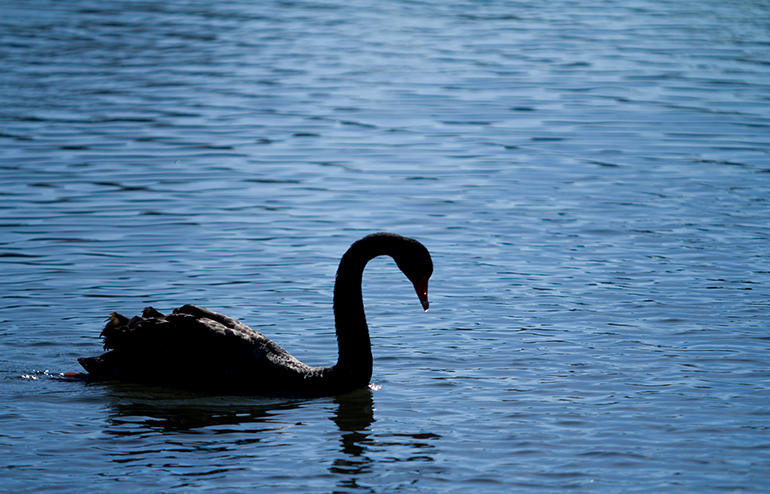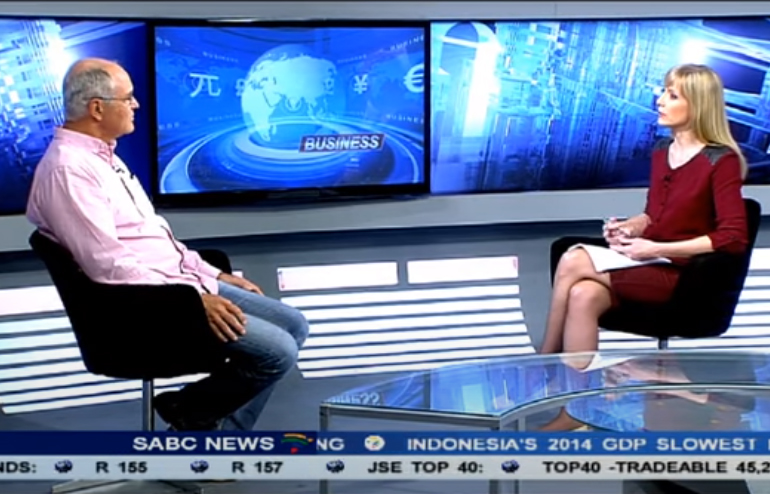On December 31, 2019, an official case of the novel respiratory disease of the species of coronaviruses was reported in Wuhan, China (WHO, 2020), marking the beginning of what has now proved to be one of the most devastating viral outbreaks in modern history.
The coronavirus pandemic (COVID-19) came as a rare and unprecedented event. Could this be what economists call a “black swan”? A black swan is an extremely rare event that is often unpredictable beforehand. Black swan events usher catastrophic damage to the economy as they negatively impact financial markets and investments. Some could argue that even the use of robust modelling cannot prevent a black swan (Staff, 2020).
In this article we will argue whether the COVID-19 pandemic is a true black swan event. The Black Swan theory was developed by professor, statistician, and former options trader Nassim Nicholas Taleb, and must meet three criteria:
-
- “First, it is an outlier, as it lies outside the realm of regular expectations, because nothing in the past can convincingly point to its possibility.
- Second, it carries an extreme ‘impact.’
- Third, despite its outlier status, human nature makes us concoct explanations for its occurrence after the fact, making it explainable and predictable.” (Taleb, 2011)
Now, let us discuss the above attributes individually and hope to reach a conclusion.
Is the COVID-19 pandemic an outlier?
History has proven that infectious diseases, epidemics, and pandemics are the number one mass killers. More people died in the 1918 flu outbreak than in the First World War (Jones, 2018), with the 1918 influenza pandemic being the worst severe pandemic in recent history. Scientists have recorded evidence of past possible coronavirus pandemics and according to an article by (Heing, 2020), experts warned of a possibility of a pandemic decades ago. Therefore, COVID-19 cannot be classified as an outlier but is merely part of a pattern of increasingly frequent epidemics that have coincided with urbanization, globalization, and climate change.
Does COVID-19 carry an extreme impact?
COVID-19 is not anticipated to have an impact even remotely close to that of the 1918 flu pandemic which saw at least fifty million deaths. However, with focus on the financial impact of COVID-19, it might be too early to compare previous recessions to the 2020 Coronavirus Crash, but it has been predicted that the current pandemic will continue to have an extreme impact on national economies.
In March 2020, the COVID-19 pandemic began decimating the economy. A mandatory lockdown was imposed across the globe resulting in global economic shutdowns, panic buying and supply disruptions which exacerbated the market, and thus mass hysteria ensued. The global stock market saw multiple severe drops, with the largest drop on Monday the 16th of March 2020, and this has since been nicknamed “Black Monday II”. Banks and reserves across the world have cut their interest rates, bank rates and cash-flow rates in an attempt to deal with the pandemic (Hutchens & Chalmers, 2020).
Is the COVID-19 pandemic explainable or predictable in hindsight?
Since we are still in the midst of the COVID-19 pandemic crisis it cannot be said with certainty whether this pandemic will be normalized in retrospective.
Conclusion
Even though we cannot answer the third aspect of the Black Swan theory, we can already see that COVID-19 is not a Black Swan event by the mere fact that SARS-coronavirus outbreaks started in 2002 even though the world had nervously hoped that the outbreaks will be controlled before reaching the pandemic status. Instead, the COVID-19 pandemic can be defined as a White Swan event; something that would eventually take place with great certainty (Hutchins, 2020).
References
Heing, R. M., 2020. Experts warned of a pandemic decades ago. Why weren’t we ready?, s.l.: National Geographic.
Hutchens, G. & Chalmers, S., 2020. ABC News. [Online]
Available at: https://www.abc.net.au/news/2020-03-16/coronavirus-fears-see-australian-market-slump-to-start-new-week/12058904
[Accessed 18 November 2020].
Hutchins, G., 2020. Black Swans, Grey Swans, White Swans. [Online]
Available at: https://accendoreliability.com/black-swans-grey-swans-white-swans/
[Accessed 18 November 2020].
Jones, D., 2018. More People Died in the 1918 Flu Pandemic Than in WWI, s.l.: History.
Staff, I., 2020. Investopedia. [Online]
Available at: https://www.investopedia.com/terms/b/blackswan.asp#:~:text=A%20black%20swan%20is%20an,they%20were%20obvious%20in%20hindsight.
[Accessed 19 Nov 2020].
Taleb, N. N., 2011. Chapter 1: The Impact of the Highly Improbable. In: A. Lane, ed. The black swan : The impact of the highly improbable. s.l.:s.n.
WHO, 2020. Novel Coronavirus (2019-nCoV), s.l.: World Health Organization.
Article by Tina Victoria Mhazo
Pharmacoeconomic Analyst
VI Research





 The Cave and its inhabitants: Three prisoners are locked in chains in a cave, all facing an empty cave wall. They have been there all their life. They cannot move at all. Not even turn their heads. Behind them, there is a fire burning and other, free people are walking silently going about their day between the fire and the prisoners. The only thing the prisoners can see are the moving shadows on the wall as the free people pass by. For them, the shadows represent truth, their truth.
The Cave and its inhabitants: Three prisoners are locked in chains in a cave, all facing an empty cave wall. They have been there all their life. They cannot move at all. Not even turn their heads. Behind them, there is a fire burning and other, free people are walking silently going about their day between the fire and the prisoners. The only thing the prisoners can see are the moving shadows on the wall as the free people pass by. For them, the shadows represent truth, their truth.